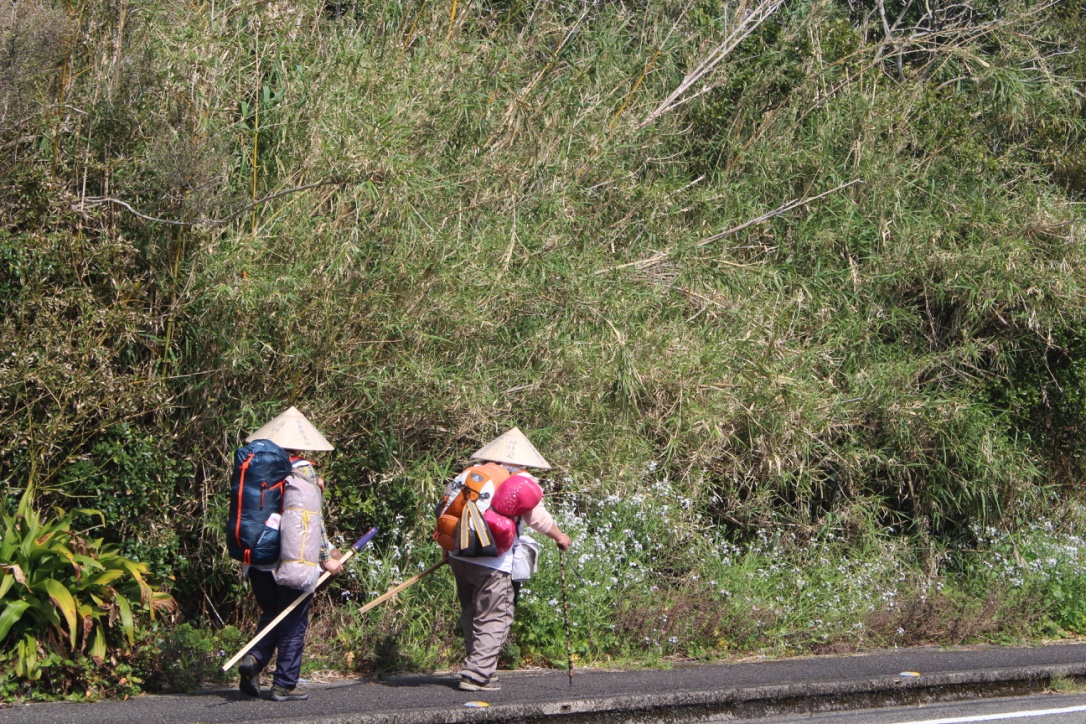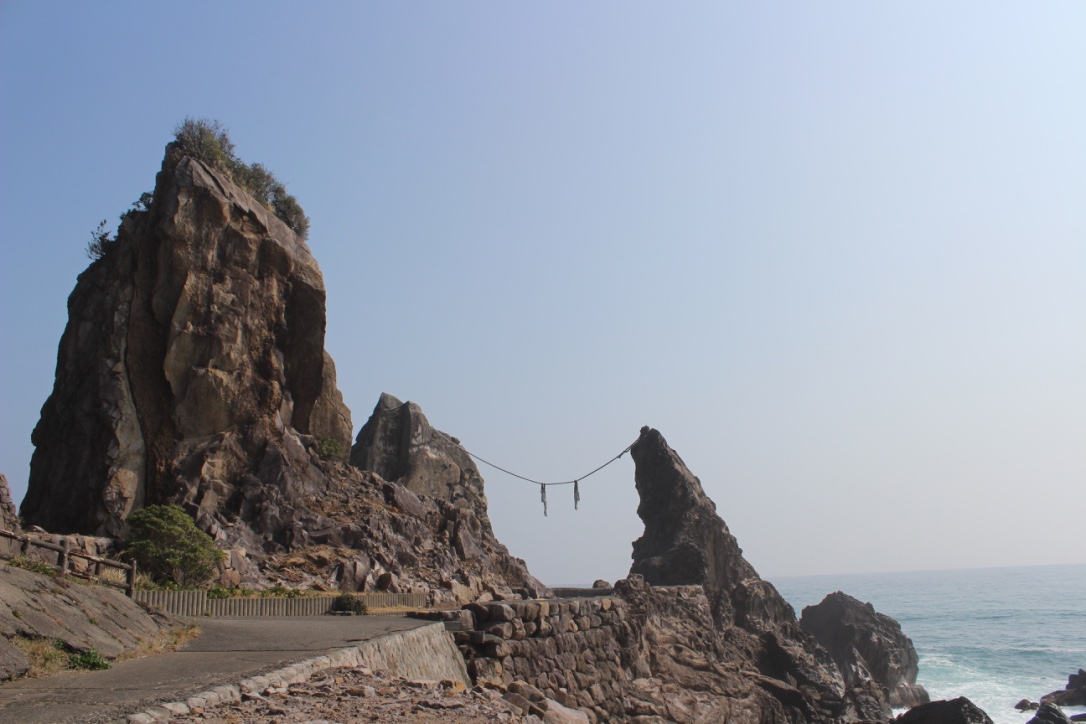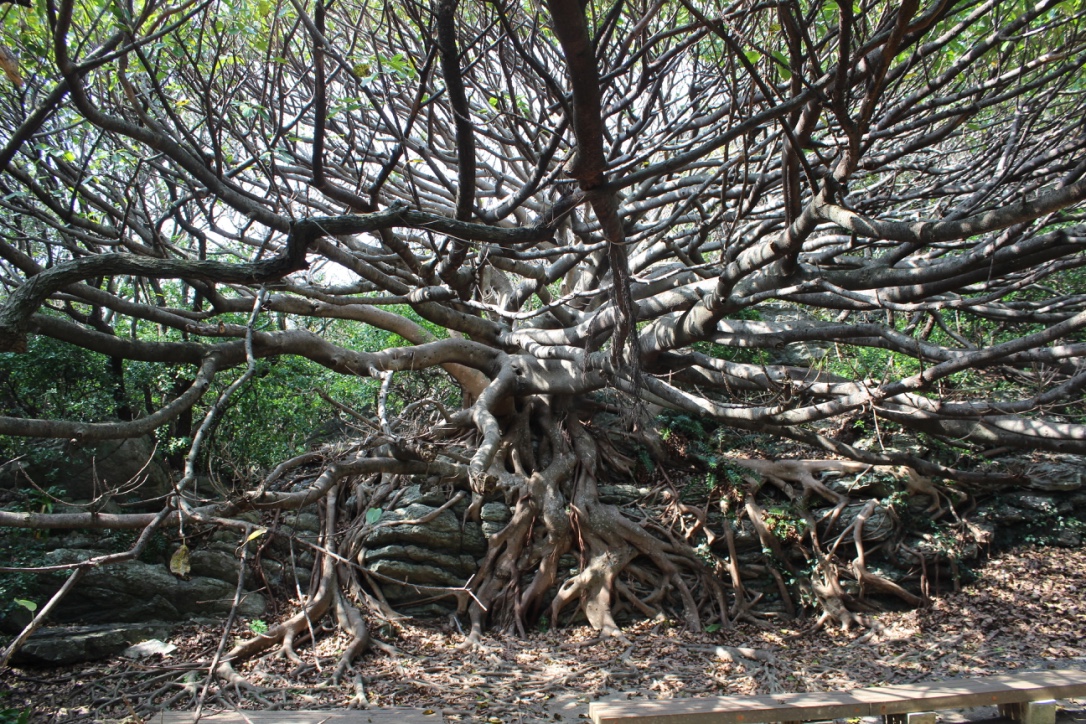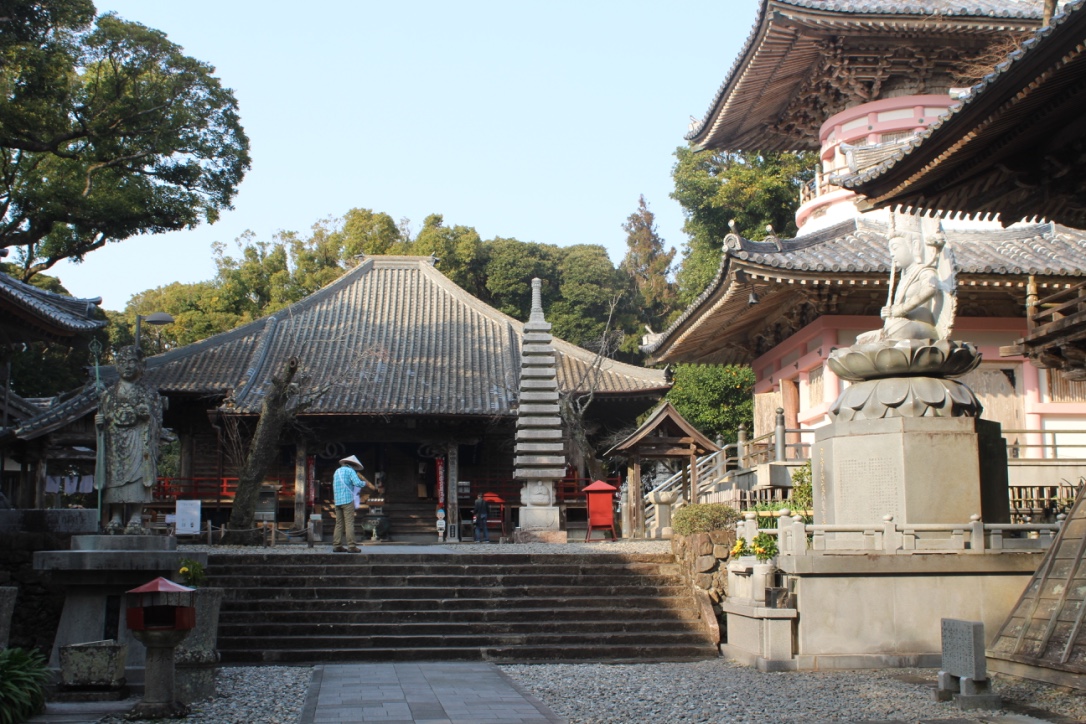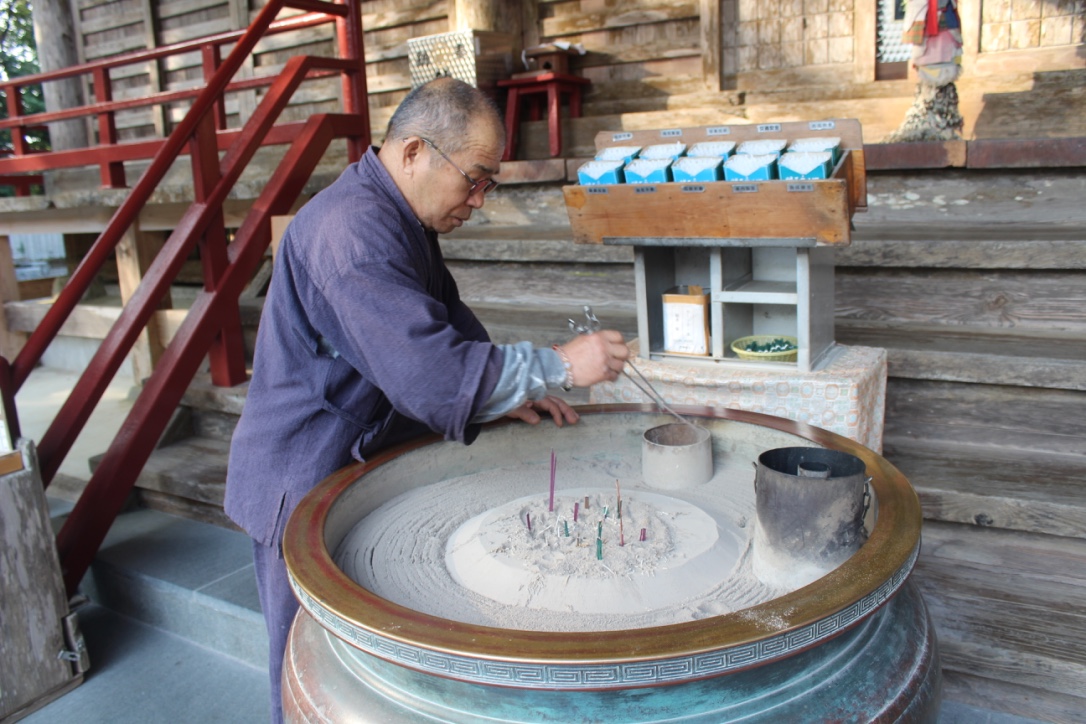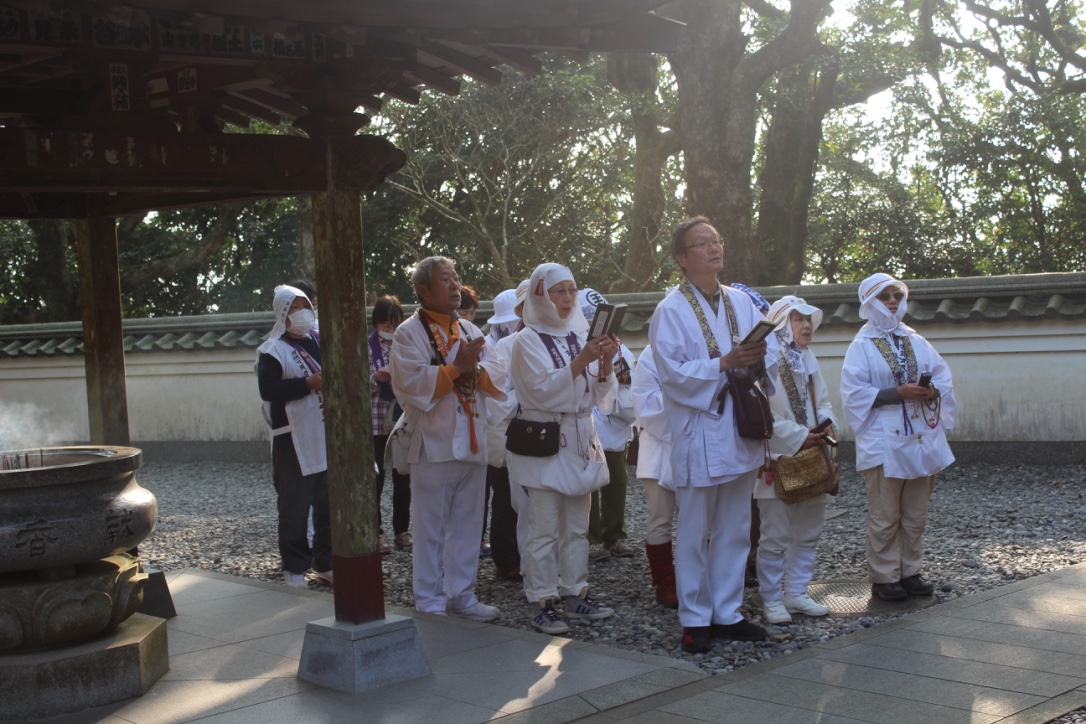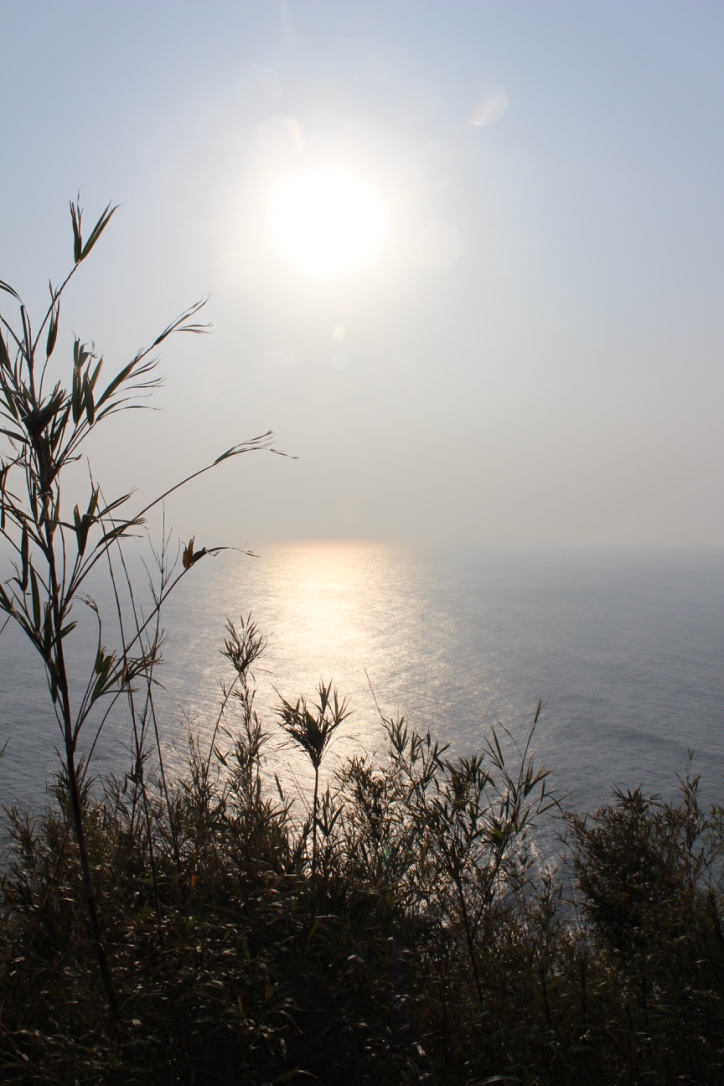Kochi Prefecture, Place of Ascetic Training,
temples 24 – 39
Great Sky, Great Ocean – Cape Muroto and Hotsumasakiji (temple 24)
The path along the shore of the Pacific Ocean on road 55 to Cape Muroto is a long walk for pilgrims. The hard asphalt, the merciless heat and cars constantly passing by is a place for ascetic training.
.
.
.
Two pilgrims hiking on coastal road 55
.
.
Meoto-Iwa, the husband and wife rocks
The two rocks are connected with a sacred rope of braided rice stalk (Shimenawa). According to Shintō, the two connected rocks represent the union of the Kami Izanagi and Izanami and stand for the union of marriage.
.
.
Akuo (Ficus Superba) is a subtropical plant near the coastline. As a defense against the many typhoons, its roots hold on to the rocks and the branches grow horizontally.
.
.
.
When I arrived at Hotsumisakiji (temple 24), it was already late afternoon. Not many pilgrims were there.
.
.
Several times a day, a priest cleans the incense holder in front of the Hondo or main hall. As part of the ritual, pilgrims light a candle and incense before walking up the stairs of the temple hall to hit the gong. The sound of the gong announces to the main deity the arrival of the Ohenro.
After that, they put a name-slip into a box and chant sutras. The most important Sutra is the Heart Sutra. This Sutra, also called the Sutra of Great Wisdom, reminds the Ohenro to see the emptiness of all phenomena. In order to be able to chant the Sutra in Japanese, I made a copy of the Heart Sutra at home and laminated the sheet of paper. Whenever there were groups of pilgrims chanting the “MA KA HAN NYA HA RA MIT TA SHIN GYO” I joined in in order to get in the flow of the chanting.
.
.
Watching the sunset from Cape Muroto was the highlight of my day. 1,200 years ago, Cape Muroto was a very special place for Kūkai . At the age of 31 (804 AD), he experienced enlightenment when meditating in a cave on Cape Muroto. It was here that he changed his birth name to Kūkai, (Kū=sky of emptiness, Kai=ocean).


